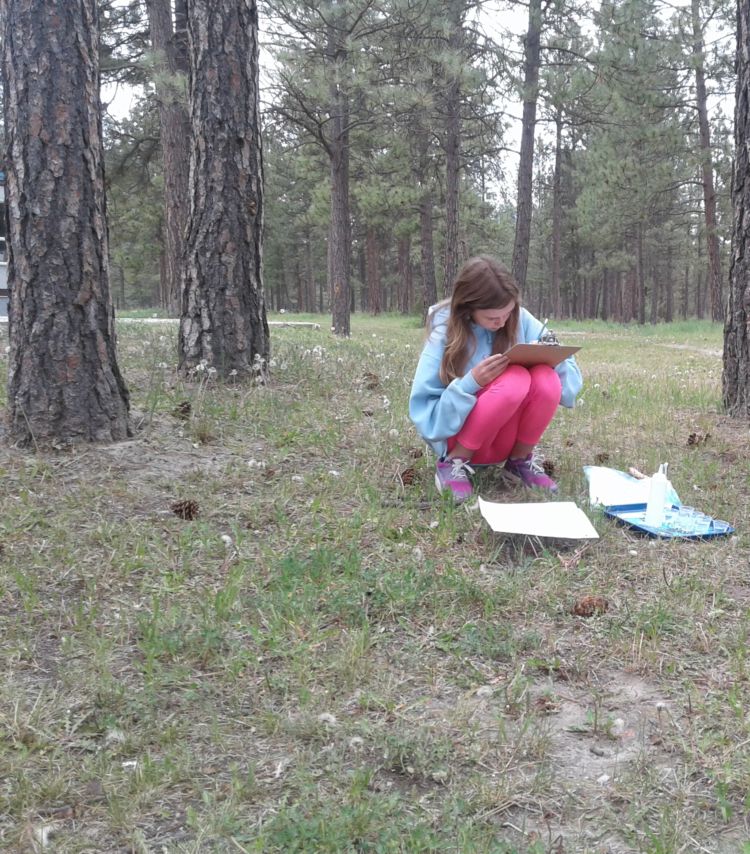
Do you like to go for a walk in the woods with a backpack on your back like Riley, pictured above, from Mrs. Murphy’s Grade 5/6/7 class at Martin Morigeau School? Riley isn’t taking any old walk though, she’s walking to get water for her community which is experiencing a period of economic water scarcity. This means that her community has access to potable water, but for a myriad of reasons, can’t access it and thus community members must walk a long distance to get water for all of their needs.
In reality, Riley is fortunate to live in Canal Flats where she has access to beautiful, clean drinking water from the headwaters of the Columbia River. However, many communities around the world are experiencing either this reality of economic water scarcity, or simple water scarcity where there is access to potable water locally, but there simply isn’t enough for everyone’s needs.

Through the hands-on water activity in the “Our Water” lesson, Mrs. Murphy’s class was able to catch a glimpse of the water-related reality of many other children around the world. Two situations were explored: economic water scarcity and water scarcity, and students found that there really was a difference in their ability to fulfill their water needs in the two situations. “I liked the water scarcity station because I had access to clean water and I could fill my cups even though I might not have enough,” said Ryleigh, the classmate of Riley.

The economic water scarcity group had to walk a long distance to fill up their water cups one by one from a source of water that they were disappointed to discover wasn’t even clean! The water scarcity group simply had less water than was needed to fill all the needs of their community and thus had to prioritize the needs of different water users. In the end, the economic water scarcity group was only able to fill 3 glasses in the same time that the water scarcity group partially filled all or most of their cups.
In wrapping up this lesson, students were asked to record the length of their showers in minutes and later see what it felt like to take a shower half as long. By planting the seed of awareness – that not everyone leads a life of such water abundance as Canal Flats residents – students can take a step back and consider their actions and the needs of others when it comes to water.



